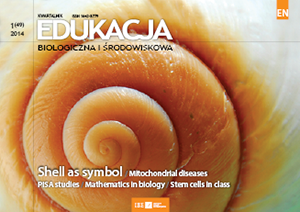Developing students’ critical thinking during biology lessons in junior high school with the use of IT
Developing students’ critical thinking during biology lessons in junior high school with the use of IT
Author(s): Izabela SzotSubject(s): Education, Media studies, Theory of Communication, School education, Evaluation research, ICT Information and Communications Technologies, Sociology of Education
Published by: Instytut Badań Edukacyjnych
Keywords: students’ critical thinking; WebQuest; IT;
Summary/Abstract: Critical thinking is one of the main skills of modern human. In the age of overwhelming amount of information available on the Internet, one of the most important aims of school teaching is developing the ability of selecting and evaluating information found on the Internet by students. Therefore, the aim of my research was to examine how junior high school students’ critical thinking can develop while using the Internet as a source of information. A group of second year students of junior high school (age 14–15) were asked to complete some WebQuests. Their WebQuest task was to prepare, using given Internet sources, a paper with information required for the next biology lesson. WebQuest topics concerned human anatomy and physiology (e.g.: digestive, circulatory and respiratory system). Apart from the Internet sources, students were also given a presentation, which was later on used, by the teacher during the lesson. An experimental group included 46 students who accomplished minimum three of five assigned papers. It is 75% of all population of second year students. Completed papers were analyzed. Content selection was taken into consideration, as well as the form of presenting it by the students during the class. Results show that: - 32% of students prepared all or almost all papers on a high level of accuracy, - 35% of students improved their papers during the experiment, - 20% of students did not complete correctly any of their papers. Well-prepared papers were those which were not copied from website articles. They showed deep level of subject understanding and proper source selection. Also, the form of paper allowed quick and easy access to the information. The research will be continued.
Journal: Edukacja Biologiczna i Środowiskowa
- Issue Year: 2014
- Issue No: 1
- Page Range: 42-46
- Page Count: 5
- Language: English
- Content File-PDF

